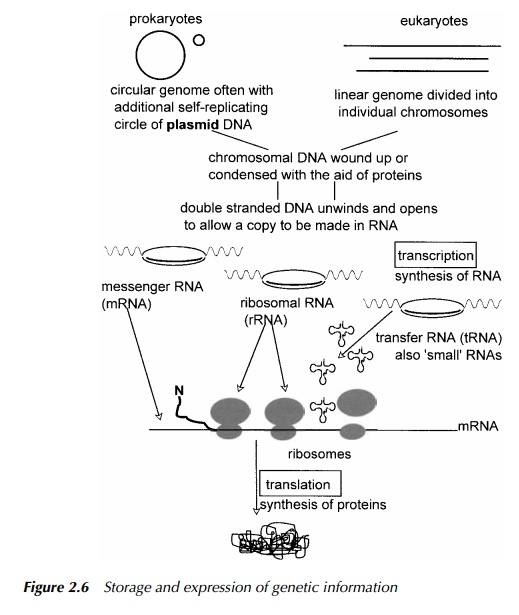Chapter: Environmental Biotechnology: Microbes and Metabolism
Genetic blueprint for metabolic capability
The genetic blueprint for
metabolic capability
Metabolic capability is the ability of an organism or cell to
digest available food. Obviously, the first requirement is that the food should
be able to enter
Once entered, the enzymes must be
present to catalyse all the reactions in the pathway responsible for
degradation, or catabolism. The information for this metabolic capability, is
encoded in the DNA. The full genetic information is described as the genome and
can be a single circular piece of DNA as in bacteria, or may be linear and
fragmented into chromosomes as in higher animals and plants.
Additionally, many bacteria
carry plasmids, which are much smaller pieces of DNA, also circular and
self-replicating. These are vitally important in the context of environmental
biotechnology in that they frequently carry the genes for degradative pathways.
Many of these plasmids may move between different bacteria where they
replicate, thus making the metabolic capability they carry, transferable.
Bacteria show great promiscuity with respect to sharing their DNA. Often,
bacteria living in a contaminated environment, themselves develop addi-tional
degradative capabilities. The source of that genetic information new to the
organism, whether it is from modification of DNA within the organism or
transfer from other microbes, or DNA free in the environment, is a source of
hot debate between microbiologists.
DNA not only codes for RNA
which is translated into proteins but also for RNAs which are involved in
protein synthesis, namely transfer RNA (tRNA) and ribosomal RNA (rRNA), also,
small RNAs which are involved in the processing of rRNA. These are illustrated
in Figure 2.6. There have been many systems used to describe the degree of
relatedness between organisms, but the most generally

accepted is based on the sequence of the DNA coding for ribosomal
RNA, the rDNA (Stackebrandt and Woese 1981). For completeness, it is important
to mention the retroviruses which are a group of eukaryotic viruses with RNA
rather than DNA as their genome. They carry the potential for integration into
inheritable DNA due to the way in which they replicate their genomic RNA by way
of a DNA intermediate.
Related Topics